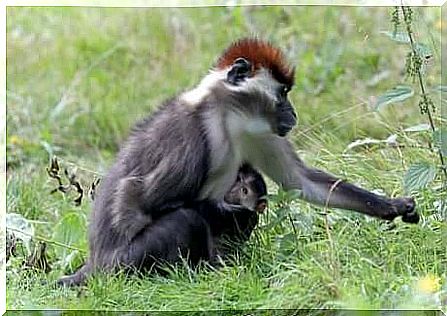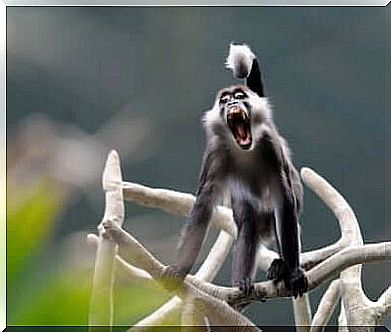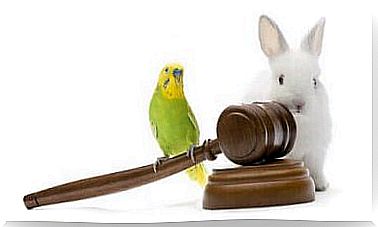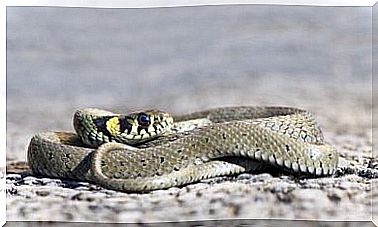The Dark Brown Deer: The Endangered “redhead” Primate

The more the years go by, the more the hope seems to fade that the black cercocebo disappears from the list of endangered animals. Its natural habitat is now reduced to a small extent in Nigeria, Cameroon and Gabon, near the coast of the Atlantic Ocean.
In general, the jungle and mangrove swamps are the favorite habitat of this primate, where it lives with the whole family and finds shelter among the foliage of the dense vegetation. The groups of Cercocebo moro are very numerous and can host up to 70 specimens. Let’s find out more.
Unmistakable fur
The primate family of the mammalia class is very large, but few of its members are as easy to identify as the black- headed cercocebo, thanks to the unmistakable red color that surrounds the top of its head.
The predominant colors in its fur are gray, present on the back, and white mainly on the belly; this coloring leads him to have a nice black head with white cheeks.

The athletic and lean build makes him particularly adept at moving between the canopies of trees, and his huge tail helps him balance his body weight, which ranges from 5 to 13 kilos. Unlike most primates, Cercocebo moro males and females are similar in weight and size.
Its average length, between 50 to 75 centimeters, and its long arms and legs, give it remarkable agility to move between the thinnest branches. Thanks to this characteristic it is not easy prey for anyone.
Nutrition and behavior of the black cercocebo
The fact that he is omnivorous makes him a true opportunist, ready to eat whatever comes his way. Its diet is mainly based on fruit and tender shrubs, but it also loves seeds, bird eggs and small invertebrates such as snails.

Its powerful jaw allows it to ingest the harder-skinned fruits, something that other animals cannot do and that guarantees it exclusivity on a large variety of food.
Within the numerous groups in which it lives the females command. They are the ones in charge of establishing the hierarchies between adult specimens and puppies, and are ready to face anyone who is not willing to occupy the assigned place.
Males are more dynamic and can move away from the group by traveling long distances. A group of males, on the other hand, always remains attached to the tribe, to defend it promptly. They usually mark their territory with powerful shouts that frighten anyone who is about to occupy it.
They have a rich and varied vocal ability, demonstrating great intelligence. They are able to communicate with each other even at a distance of 100 meters, even if sometimes the clash between different groups is inevitable.
Current program to prevent extinction
Habitat loss due to deforestation is the main reason for the reduction of the Cercocebo moro populations. Another problem is the steadily increasing consumption of their meat by local populations, fomented by an uncontrolled hunting phenomenon that threatens their population even more.

The low birth rate certainly does not improve the situation; females give birth to one cub at a time and require a gestation of 170 days. The puppies of Cercocebo moro are born hairless and are almost indistinguishable from other species. The indistinguishable red “hat” begins to pop up once adults.
The average age of these playful monkeys ranges from 25 to 30 years, like the average of other primates, although in captivity they can easily exceed this figure. Currently, the Barcelona Zoo is one of the main sites for the conservation of the species: here the situation is controlled to avoid its extinction.
Fighting the illegal hunting of this type of primate and reducing the felling of trees in their habitat would mean saving one of the most threatened monkey species today. Unfortunately, their situation is far from promising.









